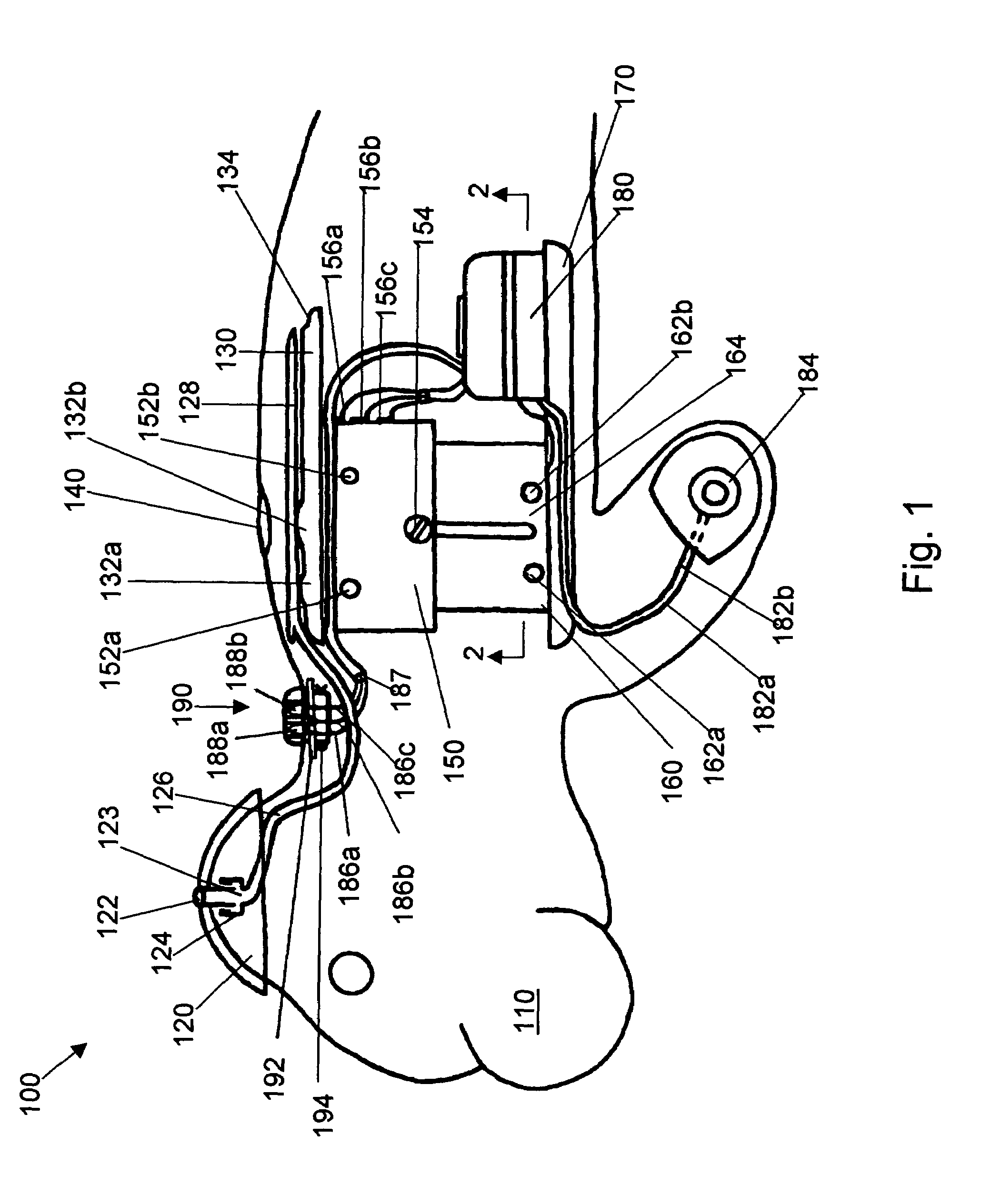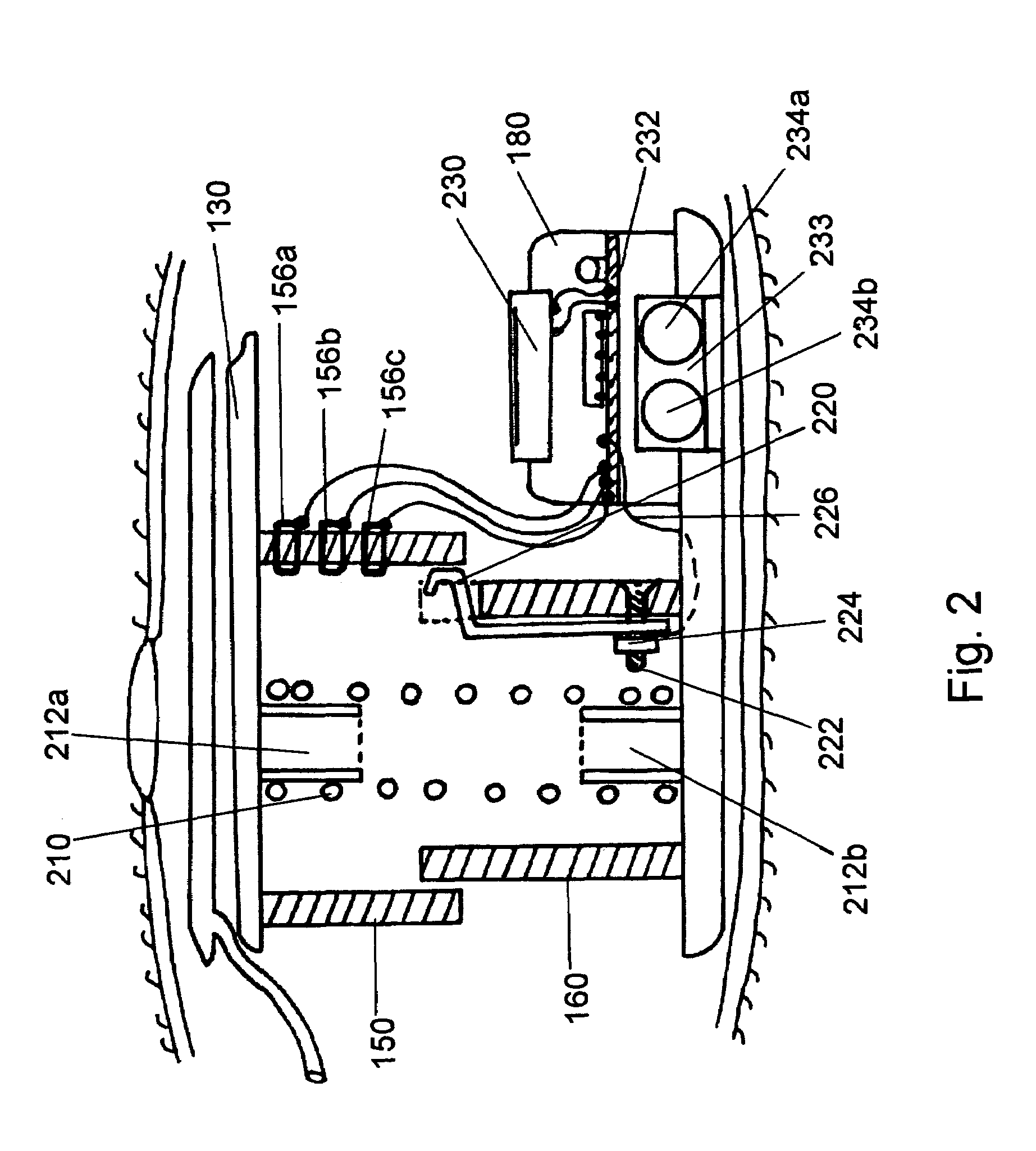CPR training device
a training device and cardiac resuscitation technology, applied in the field of cardiac resuscitation training and simulation, can solve the problems of inability to remember how to do cpr, unattractive, and high cost of state-of-the-art training devices, and the existing devices do not fully address the problem of significant decline in cpr skills
- Summary
- Abstract
- Description
- Claims
- Application Information
AI Technical Summary
Benefits of technology
Problems solved by technology
Method used
Image
Examples
Embodiment Construction
1. PREFERRED EMBODIMENT
[0023]Referring to FIG. 1, an embodiment of a CPR training aid 100 in a non-humanoid housing 110 is shown in perspective view. CPR training aid 100 includes a simulated airway, a compression mechanism, and a controller unit and display providing prompting and feedback on CPR performance while learning and practicing CPR.
[0024]The simulated airway consists of a removable face mask 120 which is open to ambient air at opening 122 and includes an air tube fitting 123 that is inserted into air tube connector 124. An air tube 126 runs from air tube connector 124 through the neck of non-humanoid housing 110 and attaches to simulated lung 128, which can be a flexible container or air bag and that may be disposable. Simulated lung 128 lies on top of anterior or upper chest plate 130 and inside non-humanoid housing 110. It is calibrated to hold an amount of air equivalent to the amount of air contained in human lungs. The size of simulated lung 128, and hence the amount...
PUM
 Login to View More
Login to View More Abstract
Description
Claims
Application Information
 Login to View More
Login to View More - R&D
- Intellectual Property
- Life Sciences
- Materials
- Tech Scout
- Unparalleled Data Quality
- Higher Quality Content
- 60% Fewer Hallucinations
Browse by: Latest US Patents, China's latest patents, Technical Efficacy Thesaurus, Application Domain, Technology Topic, Popular Technical Reports.
© 2025 PatSnap. All rights reserved.Legal|Privacy policy|Modern Slavery Act Transparency Statement|Sitemap|About US| Contact US: help@patsnap.com



